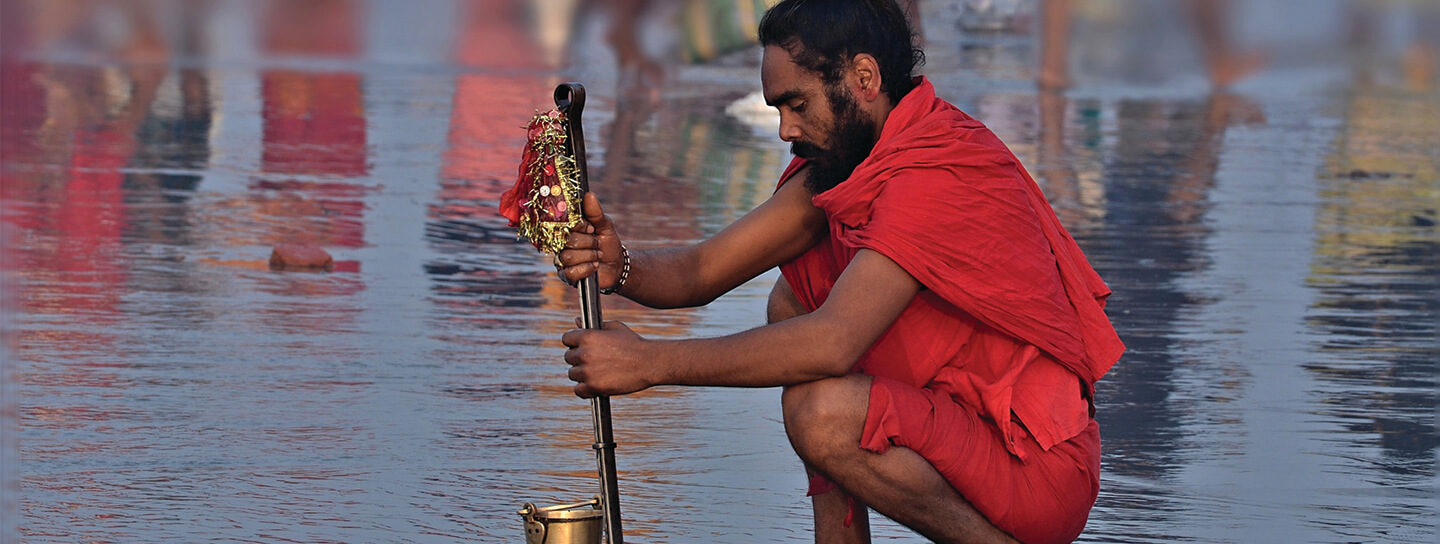It may be hard to believe but even in ancient times human beings faced stress. We talk of work stress, health stress and even long queues and traffic jams causing stress. Now think of people living in, say the first millennium, and what they faced – there were invaders and wars, poverty, famines and epidemics – that is stress at a level we can’t even imagine.
Going on a pilgrimage is an ancient tradition and so let’s talk of a pilgrimage as a therapy for stress. It is after all, a very personal journey into our inner being.
Going on a pilgrimage is the perfect way to detach oneself from the rat race and gain both self knowledge and peace of mind. A well planned pilgrimage benefits both the body and the mind.
As it is said so poetically in the Aitareya Brahmana:
“Flower-like are the heels of the wanderer,
Thus his body grows and is fruitful.
All his sins disappear,
Slain by the toil of his journeying.”
Any kind of traveling has a beneficial effect but a pilgrimage done properly adds a spiritual peace that lasts much longer than endless photos on Facebook or the rush of a Twitter feed. For instance the joy of walking in the footsteps of Lord Rama at Rameswaram or sitting at the samadhi of Sai Baba at Shirdi will be an experience that will sustain you through many moments of crisis and stress.
During a pilgrimage the pilgrim is also traveling within his mind. So there is a correct way to approach a pilgrimage to gain the most from the tirthayatra.
What does a pilgrimage mean to you? Landing at a tirthasthana by air, a quick dash to a temple, zipping up to the garbha griha for a rushed puja while mumbling the mantras and back to the airport lounge thinking you have gained nirvana?
You are so mistaken. It will do nothing for you spiritually if you give in to such mindless rituals.
A true tirtha needs time. In ancient times a pilgrimage meant walking. Pilgrims trekked along narrow Himalayan tracks for months to reach Badrinath or Kedarnath. They walked through the Arabian Desert to get to Mecca or across Europe to reach Jerusalem. And during this journey they meditated and studied their past life.
Of course no one is asking you to climb mountains or trek through deserts but you still need to look at a pilgrimage as a time when you do some serious thinking.
Once you are away from the office grind and look quietly at what you have been struggling with, may be you will realize what is more important to you. As you sit in a gurudwara, listening to the melodic shabad kirtans or the rising hymns at a church, open the windows of your mind and let in the simple joys of living, life will become clearer.
Moksha is a very intricate word. A tirthayatra promises moksha but it is not so much about going to heaven or freeing oneself from the circle of birth and death. Neither is it just about freeing oneself from one’s burden of sins.
Peace of mind, serenity, clarity of thought, these are all a form of moksha. It is about living life to the fullest with generosity and kindness; of sitting on a beach in Rameswaram watching the waves and the joy of sharing this experience with family and friends.
So switch off the gadgets, the world can take care of itself just fine without you. Go on a pilgrimage in the company of the people you love and you’ll feel the stress fall away as life becomes rich and vivid again.


